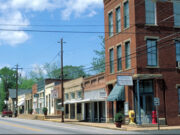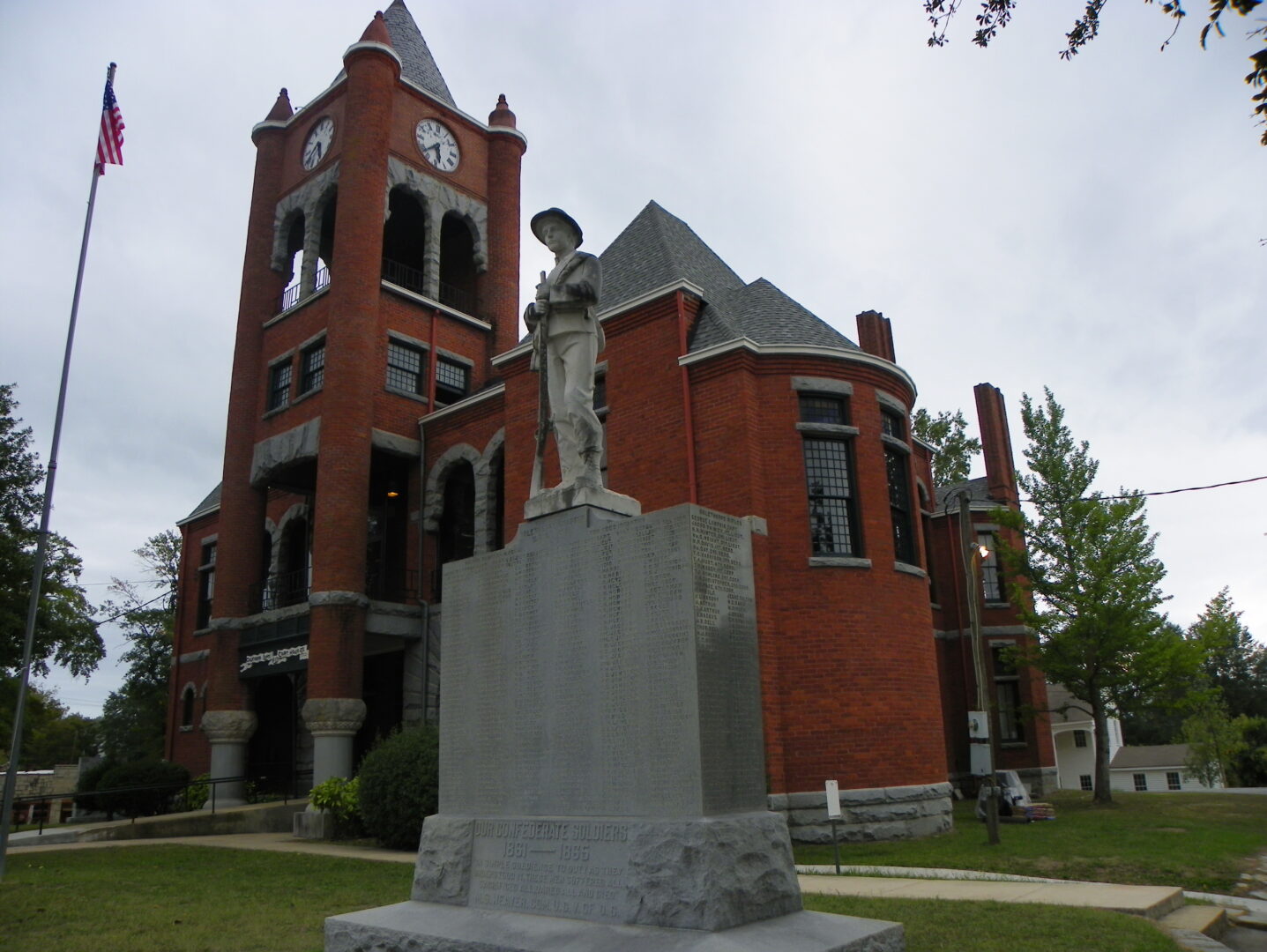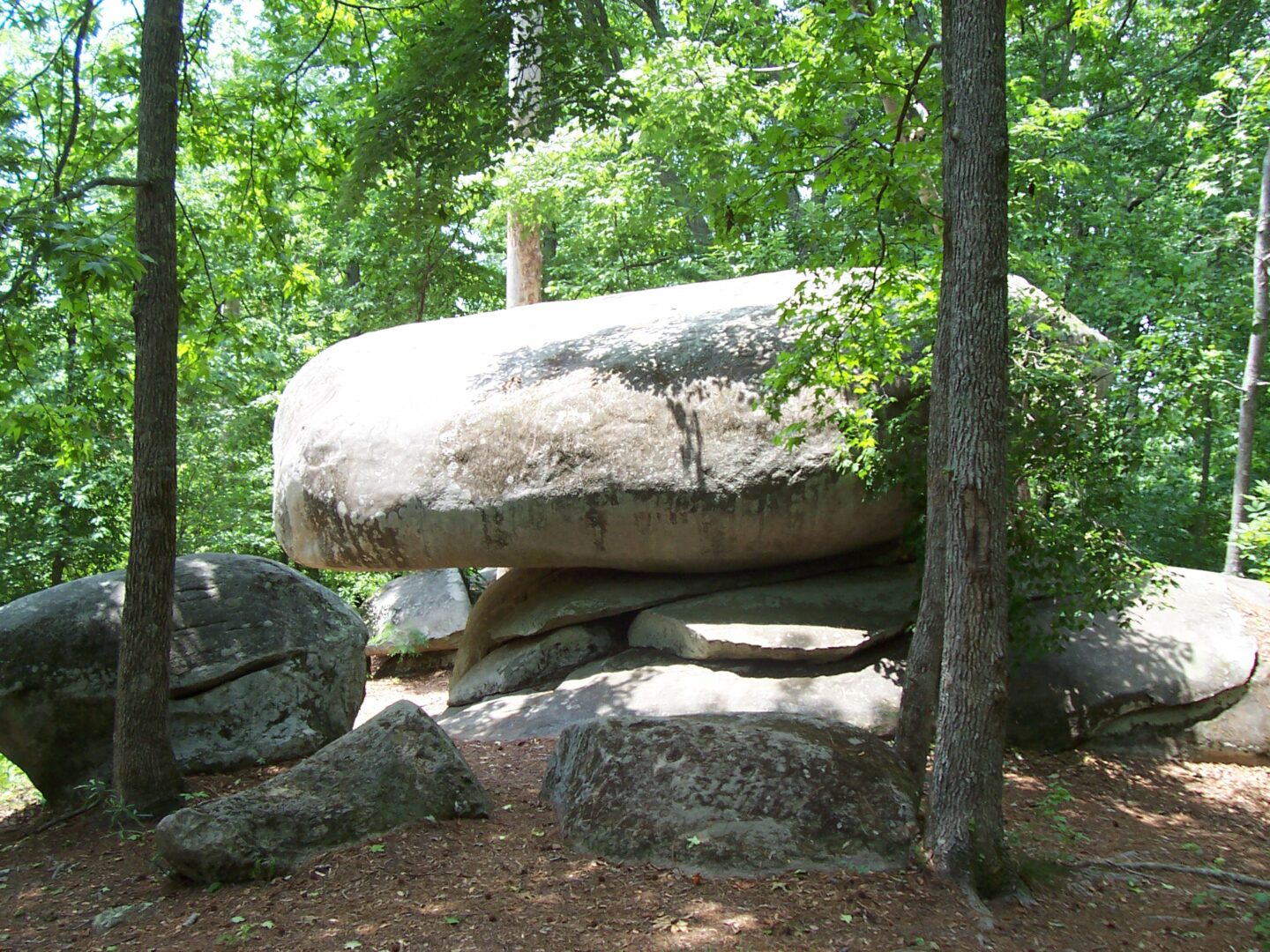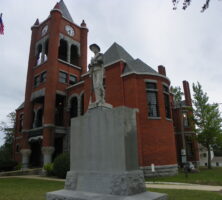Lexington, the seat of Oglethorpe County in northeast Georgia, is eighty-five miles east of Atlanta and seventeen miles east of Athens.
An act of the Georgia legislature, dated December 1793, created Oglethorpe County from Wilkes County and authorized the establishment of a county seat. The town that would become Lexington, however, was not built for several years. An argument among county residents over the choice of two locations, less than two miles apart, delayed construction of the courthouse by appointed commissioners. The lack of a proper facility severely taxed the patience of Superior Court Justice Benjamin Taliaferro, who in September 1796 bitterly complained about the need for legal decorum. By early 1797 commissioners agreed upon Lexington’s current site, noting its high ground and nearby water supply from Troublesome Creek.
In July of that year the new town, originally called Oglethorpe Court-House, received its current name of Lexington in commemoration of the battle between Massachusetts patriots and a small contingent of British soldiers in April 1775, during the Revolutionary War (1775-83). It was not the first place so named in Georgia; Wilkes County court records of early 1791 refer to the brief existence of a tobacco warehouse site named Lexington in Washington County near the Ogeechee River shoals. The new Lexington consisted of a courthouse, completed between June 1797 and 1798, and twenty lots surrounding the public square. A new courthouse, started 1819, suffered from constant leaks until removal of the cupola in 1831. Town leaders worked to improve the physical location of the courthouse square with grass and chinaberry trees. The present courthouse, built in 1887, is made primarily of local granite, wood, and brick. It represents the Romanesque Revival style of architecture, popular during the late 1800s.
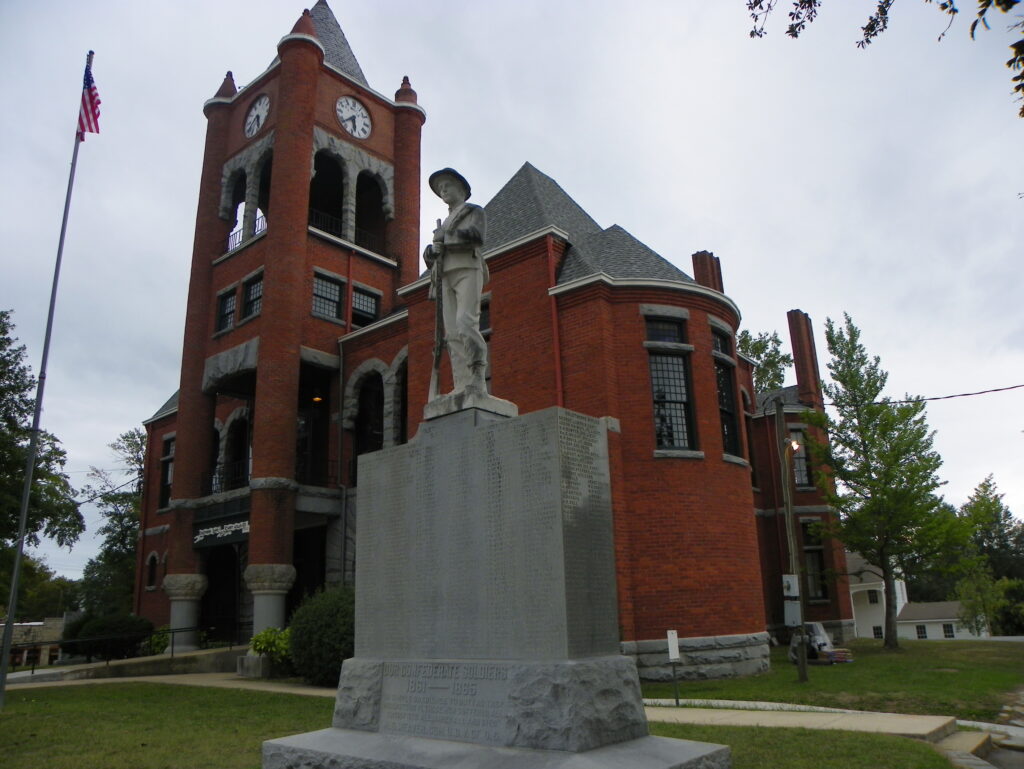
The economy of early Lexington and Oglethorpe County was based upon tobacco and cotton production as well as small subsistence farms, reminiscent of practices in neighboring Wilkes County. Local farmers also experimented with crop diversification by growing wheat and other grain products. In the town of Lexington seventeen lots were added by June 1800, followed by thirty-two more in 1804. The Georgia General Assembly incorporated Lexington in 1806. By 1810 it boasted a population of 222, including 113 enslaved persons. Between 1822 and 1830 the town organized a Presbyterian church, consisting of the reorganized membership of the former 1785 Beth-Salem meetinghouse of Oglethorpe County, as well as a Methodist and a Baptist congregation.
Skilled craftsmen, itinerant traders, and merchants made their way to Lexington to take advantage of the town’s location along the road leading to the markets of Augusta. Two of the more influential businessmen, Italian immigrant Ferdinand Phinizy and Irish immigrant Francis Meson, started their mercantile operations in Lexington during the late 1790s. In 1806 Meson bequeathed an $8,000 estate plus town lots to the county school, which later became known as Meson Academy. It served as the county high school from 1917 until it was abandoned in 1954. In 1920 it was renamed Oglethorpe County High School.
During the early nineteenth century the 1808 embargo, the War of 1812, and the financial panics of 1819 and 1837 hampered the local economy. Town residents, neighboring farmers, and plantation owners frequently sold their holdings and migrated to new lands opening in the west. In spite of periodic economic woes, Lexington continued to grow. In 1827 Adiel Sherwood, compositor of the Gazetteer of the State of Georgia, reported fifteen places of business and thirty-eight homes. When mechanized transportation gained popularity, the citizens of Lexington debated the merits of adding a railway line to speed shipment of cotton and other products. But residents refused passage of a railroad within three miles of the town, fearing disease, noise, and social disruption. Their decision forced shipment of goods and produce by wagon from a rail station at nearby Crawford. Crawford briefly challenged Lexington for the Oglethorpe County seat in the late 1870s, but the building of a new jail in Lexington and construction of a railway link between the towns in 1887 helped stop that effort.
U.S. president James Monroe, a Virginia native, visited Lexington in 1819. Several Virginian families had relocated to Lexington, and from this community emerged several north Georgia leaders of the George Troup faction, one of the two major political forces in antebellum Georgia (John Clark’s faction was the other). Troup’s followers William Harris Crawford, George R. Gilmer, and Thomas W. Cobb maintained an influential role in county and state affairs between the late 1790s and the Civil War (1861-65). Crawford also achieved national office under U.S. presidents James Madison and James Monroe, and he ran as a presidential candidate in the election of 1824.
During the Civil War, Lexington contributed to the Confederate effort by manufacturing and distributing ammunition, supplies, and livestock equipment. The years between Reconstruction and the end of the Great Depression brought the rise of tenant farms, the crop lien system, a cotton boom, and immigration to northern urban cities. By the mid-twentieth century, nearby Athens also drew residents from Lexington; by the end of the twentieth century Lexington’s population was 239. The local economy is now based on farming, granite quarries, forestry, small industries, service industries, and tourism. Lexington’s prize possession is its historic district, listed on the National Register since 1977. Houses in the area represent a variety of architectural styles, including I-house, Federal, Plantation Plain, Greek and Colonial Revival, Italianate, and Craftsman.


